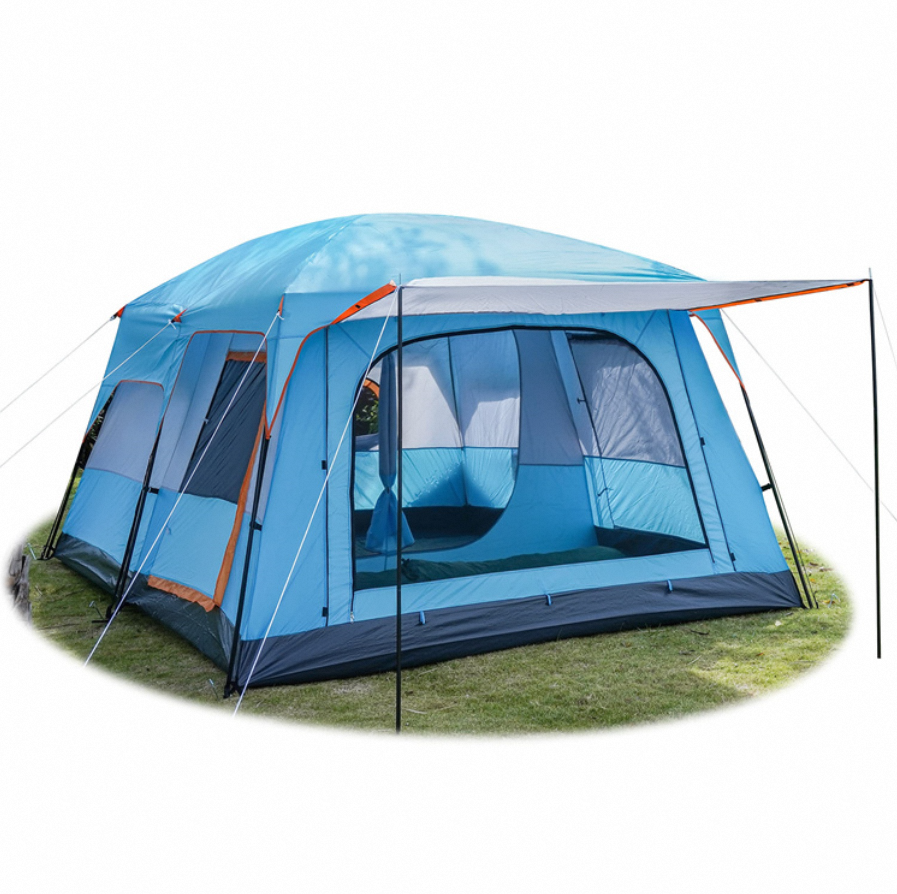Pop-up tents, also known as instant tents or folding tents, are a popular choice for outdoor enthusiasts because of their ease of use and quick setup time. They are made from various materials that provide durability, weather resistance, portability, and comfort. In this article, we will provide a detailed overview of the materials commonly used to make pop-up tents.
Tent Fabrics
The fabric used for pop-up tents is typically made from synthetic materials that are lightweight and durable. Polyester and nylon are the most common fabrics used for pop-up tents. These fabrics are water-resistant and provide UV protection, making them suitable for use in different weather conditions. Some pop-up tents feature a thicker fabric with a higher denier rating, which provides increased durability and resistance to wear and tear. The choice of fabric will depend on the desired level of durability, weather resistance, and weight.
Poles and Frames
Pop-up tents feature frames or poles made from lightweight materials such as fiberglass, aluminum, or steel. Fiberglass poles are flexible and lightweight, making them an ideal choice for pop-up tents that need to be stored compactly. Aluminum poles are lightweight and durable, making them suitable for use in different weather conditions. Steel poles are heavier than other materials but provide increased stability and durability. The choice of pole or frame material will depend on the intended use of the pop-up tent, the level of portability required, and the desired level of stability.
Zippers and Fasteners
The zippers and fasteners used in pop-up tents are typically made from plastic or metal materials. Plastic zippers are lightweight and suitable for use in dry conditions. Metal zippers and fasteners are more durable and can withstand heavier use and more extreme weather conditions. The choice of zipper or fastener material will depend on the intended use of the pop-up tent and the level of durability required.
Seams and Coatings
To provide added weather resistance, pop-up tents may feature seams that are sealed with tape or a waterproof coating. The coating used on the tent fabric may be a polyurethane (PU) or silicone coating. PU coatings are more affordable and provide adequate water resistance for most camping conditions. Silicone coatings are more expensive but provide better water resistance and durability.
Mesh and Ventilation
Pop-up tents often feature mesh panels that provide ventilation and prevent condensation from building up inside the tent. The mesh used in pop-up tents is typically lightweight and durable, allowing for breathability while keeping bugs and insects out.
Flooring
Pop-up tents often come with a floor made of lightweight and durable materials such as polyester or nylon. The floor is typically waterproof to prevent moisture from seeping in from the ground.
Rainfly
A rainfly is a cover that fits over the top of a pop-up tent and provides additional protection from rain and moisture. Rainflies are typically made of the same materials as the tent fabric and may feature a waterproof coating.
In short, pop up gazebos are available in a variety of materials to suit different needs and weather conditions. Common materials used for the canopy of the pop up gazebo include polyester, PVC, and canvas, while common materials used for the frame of the pop up gazebo include aluminum, steel, and fiberglass. Straps and buckles are generally made of nylon, while links and connectors are made of plastic. It is important to consider the materials used in your pop up gazebo before purchasing to ensure that it will meet your needs and the climate in which it will be used.

